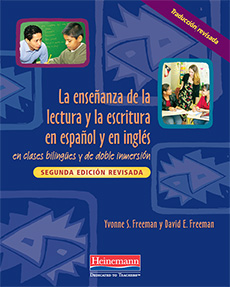

We can read words with reduced vowels, where the stress is difficult to figure out. Reduced Vowels: the vowels included in unstressed syllables which cause much spelling difficulty.The process listed above as well as other “rules” for pronouncing plurals are built subconsciously as students read and are read to-they are not a part of regular phonics instruction. For example, all phonemes associated with /s/ are voiceless and all associated with /z/ are voiced. Morphophonemic rule of Plurals: students with graphophonic knowledge subconsciously know when to use the /s/, /z/, or /iz/ sound when adding “s” or “es” to make a plural.Students with graphophonic knowledge would then know that a nonsense word such as “lamt” would not make sense. Whenever a nasal stop precedes an oral stop within a syllable, the two stops will have the same place of articulation (ex. Phonological rule of Coarticulation: A type of assimilation that occurs when two phonemes are produced or articulated in the same place in the mouth.Rules contributing to Graphophonic Knowledge.Once students have mastered phonics, aren’t they able to focus less on pronunciation and more on meaning? I always felt that was what I did as I learned. *I guess I always knew this was true about phonics, but I guess I thought it only impacted younger students just learning to read. “Students who spend time trying to recode words overload short-term memory and forget what the sentence or paragraph meant up to that point” (p.Phonics can be tested, but does not necessarily prove that meaning has been established. Subconscious rules we acquire as we read build language competence.Graphophonics: Subconscious knowledge of phonology, orthography, and the relationships between phonology and orthography.His conclusion: “Many rules simply do not work often enough to be useful to readers trying to use phonics to identify words” (p. I always thought that phonics instruction was very logically ordered, having had to learn that way myself as a youngster, but Clymer claimed that lessons could move from vowels to consonants and from stops to fricatives with no common sense linguistic sequence. Clymer Study: In 1963, Clymer investigated different phonics generalizations to find that “there is no consistency in which rules are taught or when they are taught” (p.Readers fixate more on important content words and less on smaller function words like prepositions and conjunctions. This research supports a sociolinguistic view of teaching reading because it suggests that reading letter by letter is not the best method. Eye movement research shows that readers do not focus on words one letter at a time, but rather fixate between 60 and 80 percent of the words in a text.


#ESSENTIAL LINGUISTICS FREEMAN HOW TO#
For example, for a word starting with the letters “ho”, one does not know reading directly from left to right how to pronounce the phonemes, especially when there are so many variations (hot, hope, hook, horse, hour, etc.)Īs seen in the link which I posted on the blog, at times you must also look at the whole sentence to determine what a pronunciation, especially with words like read and wind that can have two different pronunciations. Readers need to see the end of a word to know how to pronounce individual letters.They suggested that there were 166 rules and 45 exceptions, which Freeman and Freeman claim is “simply not feasible” (p. Researchers in 1971 tried to determine how many phonics rules and exceptions students would have to learn.Smith claims that “many people who have never taught and have never studied language claim that phonics is the best way to teach reading, but linguistic evidence suggests that this popular belief is not based on real scientific evidence” (Freeman and Freeman, p. Impact of Linguistics on Phonics: the authors cite the findings of Smith from the 70’s to the present.The authors stressed that proponents of phonics instruction agree that the teaching must be systematic (orderly and coordinated) and explicit (involving direct instruction), and involve stating rules clearly, providing examples, and having students practice with the examples. Correspondence between sounds and letters.Words are made up of individual sounds (phonemic awareness).Definition of phonics: phonics instruction teaches the relationship between written letters and the individual spoken sounds using the alphabetic principle.Isn’t that true! Freeman and Freeman present both sides of the debate, although they definitely favor the graphophonic/sociopyscholinguistic view of teaching reading. This chapter begins with a great sentence: “People have strong feelings about phonics” (p. Essential Linguistics: Freeman and Freeman 2004 Chapter 6


 0 kommentar(er)
0 kommentar(er)
